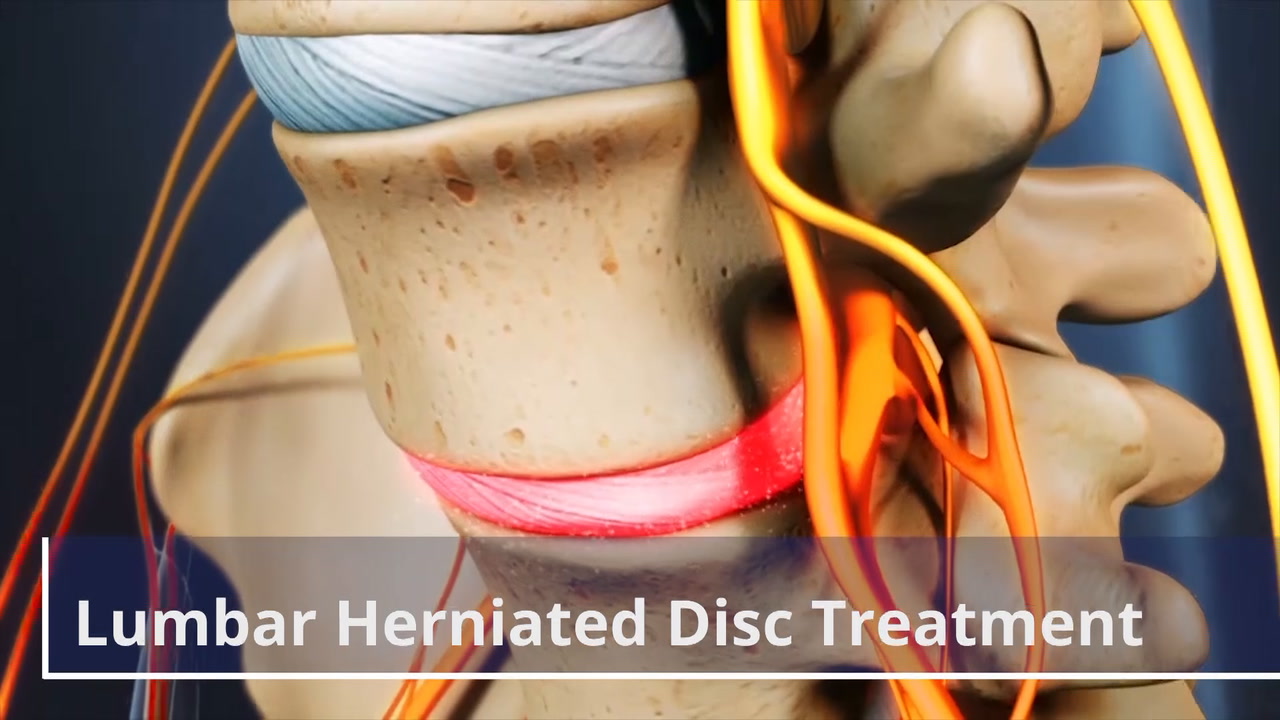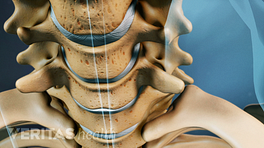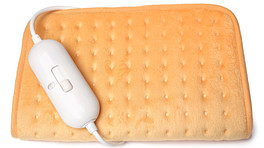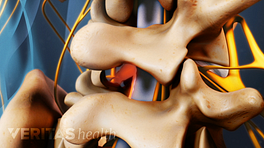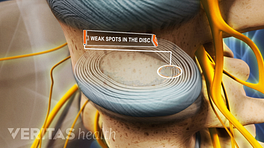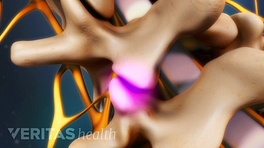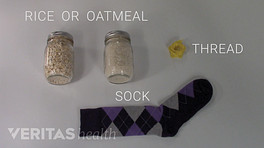The primary goal of treating a lumbar herniated disc is to reduce pain and other symptoms, not necessarily to correct the spine’s anatomy.
Most of the time, symptoms alleviate quickly on their own or using nonsurgical treatments. If such treatments are ineffective after 6 weeks, more robust, long-term methods may be considered. In some cases, surgery is necessary.
The first approach to treating lumbar herniated disc pain is the use of nonsurgical treatments, many of which can be administered at home and as appropriate. These treatments may include ice application, pain medications, muscle relaxants, heat therapy.
If these methods are unsuccessful after a few weeks, longer-term treatment options are typically recommended. These non-surgical treatments also tend to focus on pain relief, and can include epidural steroid injections, which administer a pain relief steroid directly to the outer portion of the spine; physical therapy and exercise, which work to strengthen the spine and its supporting muscles; spinal manipulation, as administered by a chiropractor, physiatrist, or specialist to adjust spinal structures to more comfortable positions; cognitive behavioral therapy, which helps many patients cope with the emotional effects of chronic pain; massage therapy, to ease muscle tension and spasms in the lumbar spine; and acupuncture, a practice based in ancient Chinese medicine that is said to restore balance to the body’s natural flow of energy.
Surgery for a lumbar herniated disc is only recommended if pain and other symptoms do not respond to nonsurgical treatments, or if low back or leg pain is so severe that it interferes with basic functions like sleeping, standing, or walking. Spinal surgery is not recommended for patients who are able to manage pain using other treatments.
The most common surgery used to treat a lumbar herniated disc is a microdiscectomy, in which a small incision of between one and one-and-a-half inches is made along the spine; the muscles surrounding the spine are pushed to the side and protective membranes are removed; the herniated disc portion of the disc is removed, reducing inflammation and irritation in the area and from the nearby nerve roots.
A microdiscectomy is a relatively minimally invasive procedure, and patients usually recover within 1 to 3 weeks. Residual leg pain or weakness may take a few weeks or months to heal, but most patients report immediate relief after the surgery is performed.
The kinds of treatment necessary to treat a lumbar herniated disc vary from person to person, and many people find that a combination of treatments is most effective for treating their pain.
